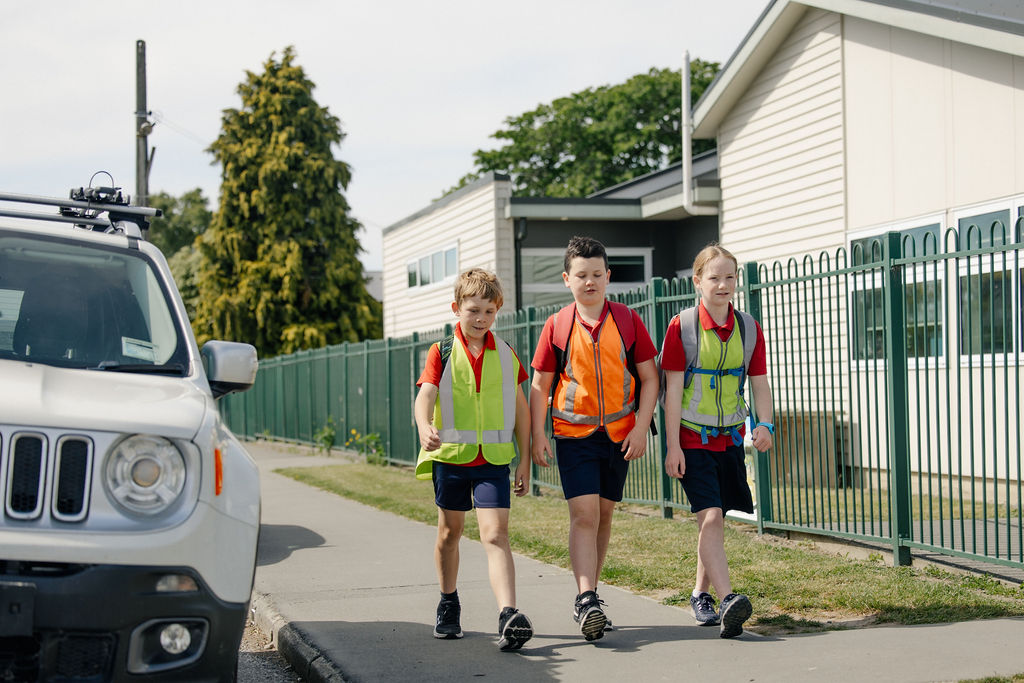Tips for Children

Kia ora! I'm Sam Sharland, your School Road Safety Advisor for Selwyn. My job is all about ensuring that our kids have a safe journey to and from school.
I work closely with all the schools in Selwyn and my main goal is to encourage active modes of transportation for students. I understand that not every family can choose those options, so my team and I are dedicated to making every type of transport a safe and secure choice for our students.
Let's work together to create a safe environment for our young commuters.
Road Safety Walking Tips
Have a chat with your tamariki about staying safe while walking, whether it's alone or with friends. Sometimes, kids might not fully understand get how to be safe around traffic, like when crossing the road.
Here's what you can do:
- Get down to your child's level by the kerb near your home.
- Ask them what they can see and hear from where they're standing.
- Remind then to; stop, look, listen and look again!
Here are some more rules you can teach them:
- Stick to the footpath, stay close to houses and away from the road.
- Keep an eye out for traffic when you approach driveways, even if it's a bit tricky.
- Use pedestrian crossings or wait for traffic signals whenever you can.
- Be extra careful in busy spots like car parks, school drop-off areas and bustling shopping areas with lots of cars.
- When there's no foodpath, walk on the side of the road where you can see the oncoming cars.
- Share the footpath with others like skaters, scooters, wheelchairs and mobility scooters.
Crossing the Road Tips
- Kerb Drill
- If there aren't any crossings or traffic signals, show your child how to find a safe place to cross and use the kerb drill.
- Take a step back from the kerb.
- Look and listen for traffic coming from all directions.
- Wait if there's traffic then check again.
- Cross quickly when it's clear, always keeping an eye out for traffic.
- Stay alert while crossing, watching for any cars coming your way.
- When the pavement is blocked by a vehicle, teach your child to:
- Check if there's a driver inside the vehicle.
- If there is, step back a bit and wait to see if the vehicle moves.
- If you can't spot a driver, look and listen for signs that the vehicle might start moving soon, like exhaust fumes, reversing lights, or the sound of the engine.
- If there's no driver and the engine isn't running, walk around the vehicle on the side closer to the houses. If there's no space there, carefully walk around the roadside while watching for traffic from all directions. Or go back and find a safe place to cross the road using the kerb drill.